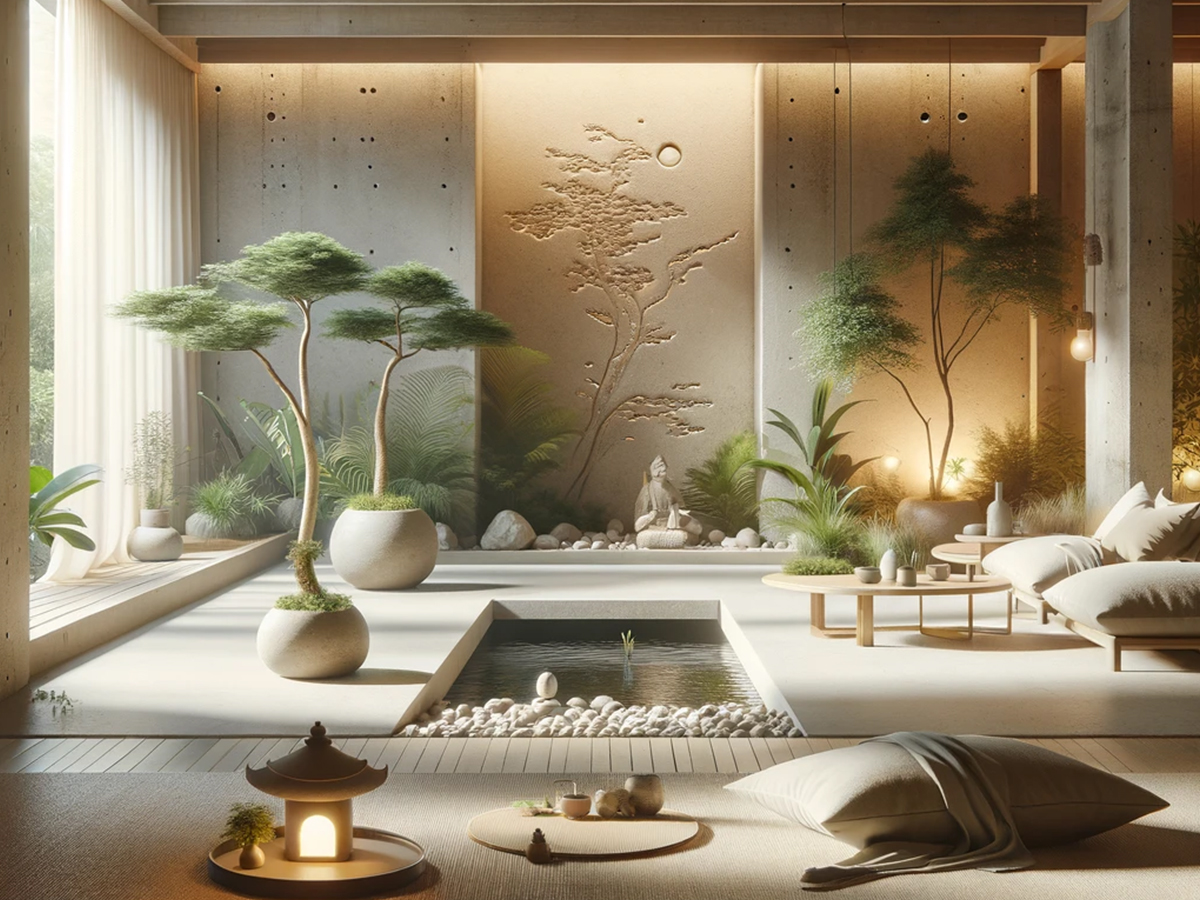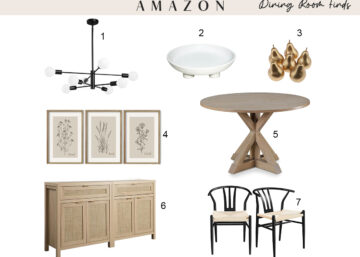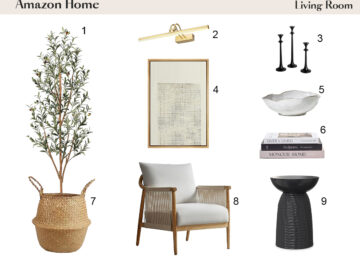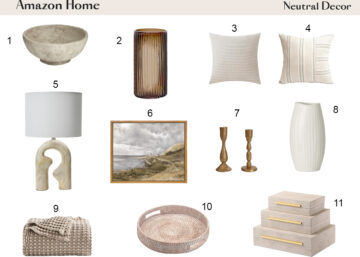Zen Spaces: Designing for Peace and Tranquility
Understanding Zen Principles in Interior Design
Embracing Simplicity: Beyond Minimalism
In the realm of interior design, “Zen” often conjures images of minimalist spaces—white walls, sparse furniture, and a pervasive sense of calm. However, Zen principles go deeper than the often superficial adoption of minimalism. True Zen in interior design is about eliminating clutter, yes, but it also involves embracing each element’s purpose and presence within a space. This philosophy stems from the Japanese concept of Ma, referring to the pure, and indeed essential, space between things. When applied to interior design, Ma encourages us to find beauty in the empty, unadorned parts of a room, focusing on the harmony between the layout and the open spaces rather than filling every inch with decor and furniture.
Naturalness: Authenticity in Materials and Form
Naturalness, or Shizen, is another pillar of Zen that advocates for the use of materials in their most natural and unpretentious form. This principle is not merely about choosing wood over plastic; it’s about respecting and showcasing the inherent qualities of materials. For instance, a wooden table in a Zen space should ideally display its grain, imperfections, and natural color without heavy stains or glossy finishes. This authenticity extends to the shape and configuration of furniture and architectural elements—favoring organic, irregular forms that flow with the human experience of space rather than rigid, geometric structures. This approach can profoundly affect the atmosphere of a space, making it feel more grounded and serene.
Subtlety: The Art of Understated Beauty
Zen is not about the absence of design but the understated use of it. Subtlety, or Yūgen, involves suggesting rather than declaring. In interior design, this can be manifested through the strategic use of textures and light to create an impact without overwhelming the senses. For example, a well-placed skylight can draw attention to a specific area of a room at certain times of the day, subtly changing the mood without the need for ornamental lighting fixtures. Similarly, a soft gradient on a wall, achieved with a slight textural difference rather than a bold color contrast, can add depth and interest in a quiet but powerful way.
These principles of Zen—simplicity, naturalness, and subtlety—are not just aesthetic choices; they are a reflection of a deeper philosophical approach to life that values authenticity, tranquility, and the mindful use of space. By integrating these principles into our interior designs, we create environments that nurture peace and reflection, essential in today’s fast-paced world.
The Role of 3D Rendering in Visualizing Zen Spaces
Visualizing Serenity Before Implementation
3D rendering stands as a transformative tool in the field of interior design, especially when conceptualizing Zen spaces where every element contributes to an overarching sense of peace and tranquility. The unique advantage of 3D visualization lies in its ability to create a comprehensive digital model that encompasses not just the physical layout but the very essence of Zen principles—simplicity, naturalness, and subtlety. This technology allows both designers and clients to visualize the potential of a space in its entirety before any physical work begins, ensuring that each design decision enhances the serene quality of the environment.
One of the seldom discussed aspects of using 3D rendering for Zen spaces is its capacity to simulate different lighting scenarios. Lighting plays a crucial role in Zen aesthetics, influencing how textures and materials are perceived and how the mood of a room can change throughout the day. With advanced rendering software, designers can experiment with natural light at different times, observing how shadows and highlights contribute to the room’s calm atmosphere. This capability ensures that the placement of windows, skylights, and even artificial light sources are optimized for the most peaceful effects.
Customization and Flexibility in Design
Another less-explored benefit of 3D rendering in Zen interior design is the unmatched flexibility it offers in experimenting with layouts and elements. Zen spaces often rely on the precise balance between occupied and empty spaces, a balance that is not always easy to achieve without a visual aid. 3D models allow designers to move elements around, try different sizes and shapes of furniture, and even adjust the room’s dimensions virtually to find the ideal setup that embodies Zen simplicity and functionality.
Moreover, customization goes beyond mere spatial arrangements. Material textures, colors, and finishes can be manipulated in a 3D program to reflect the naturalness integral to Zen philosophy. Designers can swap different wood grains, stone textures, and fabric types to see how they interact with the light and space without physical samples. This not only speeds up the decision process but also ensures that the materials chosen resonate with the Zen principle of authenticity and harmony with nature.
Enhancing Client Communication and Satisfaction
3D rendering also significantly enhances communication between designers and clients. Often, the subtleties of a Zen design concept can be lost in translation when using traditional blueprints and mood boards alone. A realistic 3D visualization helps bridge the gap between conceptual ideas and tangible expectations. Clients can see and “feel” the space, understand the impact of each design choice, and provide more informed feedback. This collaborative process helps in fine-tuning the design to better meet the client’s vision and expectations, increasing overall satisfaction.
Facilitating Advanced Pre-Construction Planning
The detailed precision of 3D renderings enables a level of pre-construction planning that is particularly beneficial in Zen spaces. Designers can identify potential challenges and opportunities in the early stages of the design process, from spatial dynamics to the interplay of elements, and make adjustments before construction begins. This foresight can prevent costly modifications during construction and ensures that the final space truly embodies the Zen principles of harmony and tranquility.
Architectural Elements that Enhance Tranquility
Open Spaces and Minimalist Layouts
One of the hallmarks of Zen-inspired architecture is the emphasis on open, flowing spaces that facilitate a tranquil and breathable environment. This architectural choice is rooted in the concept of Ku, or emptiness, which is central to Zen philosophy. Emptiness in this context does not denote a lack of features or furnishings but rather a thoughtful restraint in design that enhances the sense of peace and spaciousness. For architects and interior designers, achieving this involves careful planning of floor plans to avoid clutter and unnecessary structural divisions that could disrupt the serene flow of energy.
3D rendering tools play a critical role in visualizing these open spaces before they are built, allowing designers to manipulate room layouts in real-time and assess how different configurations affect the overall feel of the space. This is particularly beneficial for our target audience, which includes professionals and homeowners looking to create environments that support a Zen-like ambiance. The ability to experiment with and visualize minimalist layouts helps ensure that every square foot serves a purpose, whether for movement, light, or rest.
Natural Materials and Elements
Incorporating natural materials is another crucial architectural element in Zen spaces. Materials such as wood, stone, bamboo, and linen are favored for their organic textures and earthy colors, which help to create a calming and grounded environment. The use of these materials is not only aesthetic but also functional, as they naturally regulate humidity and temperature, contributing to a comfortable and soothing atmosphere.
The strategic use of natural elements extends beyond material choice to include features like water bodies, rock gardens, and interior courtyards. These elements introduce a sense of the natural world indoors, blurring the lines between inside and outside—a design tactic that amplifies tranquility. Water features, for example, are not merely decorative but are considered in Zen practice for their sound, which is thought to soothe the mind and spirit. Similarly, rock gardens are a meditation aid, their arrangement and simplicity providing visual calm and focus.
Maximizing Natural Light and Ventilation
The incorporation of natural light and effective ventilation strategies is pivotal in designing tranquil spaces. Zen architecture often features large windows, glass doors, and skylights that allow light to pour in, creating a bright and airy feel. These design choices are deliberate, fostering a connection with the natural environment and following the Zen principle of harmonizing with nature.
3D renderings enable the exploration of how light plays throughout the day within a given space, allowing for adjustments in window placements and sizes that maximize light exposure without compromising privacy or thermal comfort. Ventilation is equally critical, with the design often incorporating passive techniques to enhance airflow, which not only keeps the air fresh but also connects the inhabitants with the gentle and natural rhythms of the environment.
The thoughtful integration of these architectural elements—open layouts, natural materials, and strategic use of light and air—ensures that Zen spaces not only look serene but also deeply embody tranquility in every aspect. By utilizing advanced visualization tools, Elemental Viz helps clients and design professionals see the potential of these elements in creating spaces that are not just lived in but are profoundly experienced.
Integrating Nature with Interior Design
The Importance of Greenery
In the context of Zen interior design, the inclusion of greenery is not merely decorative but a deliberate effort to connect the indoors with the natural world. Plants in a Zen space do more than fill corners or brighten rooms; they are a living component that enhances the space’s air quality and provides a constant reminder of the natural cycle, aligning with the Zen principle of interconnectedness. This element of design goes beyond the usual choice of low-maintenance or visually appealing plants. It involves selecting species that can alter the room’s ambiance, contributing to its tranquility and aesthetic simplicity.
For example, the use of tall, slender plants like bamboo or sansevieria can enhance the vertical lines of a room, making the ceilings appear higher and the space more open. Hanging plants can draw the eye upward and balance the visual weight of the room, helping to maintain the minimalist approach typical of Zen spaces. The choice of planters is equally important—opting for materials like clay or stone can complement the natural texture of other interior elements, enhancing the holistic feel of the space.
Natural Light and Ventilation
A critical aspect of integrating nature into interior design involves maximizing natural light and promoting effective ventilation. Zen philosophy appreciates the natural rhythm of the day, and designing spaces that capture this rhythm can profoundly impact the occupants’ mood and well-being. Large, clear windows that offer views of the outdoors not only bring in light but also extend the room’s boundary to the outside, creating a seamless interaction between the interior and exterior environments.
Strategically placed mirrors can amplify light from these windows, spreading it throughout the room to eliminate harsh shadows and create a soft illumination that changes character with the time of day. The design and placement of windows should also consider the path of natural breezes, allowing air to flow freely through the space, which is essential for maintaining a fresh and energy-filled environment.
Harmonizing with Water Elements
Incorporating water features into interior design is a less commonly discussed but highly effective method of bringing nature indoors and enhancing the sense of tranquility. The sound of water is universally soothing, making it a perfect element for Zen-inspired spaces. Water features can range from small tabletop fountains to larger, more intricate installations like indoor streams or water walls. The reflective quality of water adds a dynamic layer to the space, while its sound promotes relaxation and mental clarity.
Designing with water features requires careful consideration of the acoustics within the space to ensure the water sounds enhance rather than disrupt the peaceful atmosphere. Elemental Viz’s 3D rendering capabilities can simulate these scenarios, allowing clients to hear and see the effect before installation, ensuring the feature complements the space’s tranquility.
Utilizing Earth Tones and Natural Textures
An often-overlooked aspect of bringing nature into design is the use of earth tones and natural textures that evoke an outdoor setting. Textures such as untreated wood, rough stone, and woven fabrics can be used to cover walls, floors, and furniture, creating a tactile experience that enhances the natural aesthetic. Earth tones—beiges, browns, greens, and grays—serve to ground the design, pulling in elements of the earth and creating a calming palette that soothes the senses.
The strategic use of these colors and textures can create a backdrop that complements rather than competes with the greener and water elements within the room. This approach is particularly effective in Zen spaces, where the goal is to create a seamless blend of indoor and outdoor elements. Using natural hues and materials helps blur the lines between constructed environments and natural landscapes, fostering a deeper sense of peace and belonging.
Practical Tips for Creating a Zen-Inspired Room
Selecting the Right Colors and Textures
When aiming to infuse Zen into any space, the selection of colors and textures plays a pivotal role in setting the room’s mood and overall feel. For Zen-inspired rooms, the palette should be soft and natural, favoring earth tones that invoke a sense of calm and grounding. Colors like soft greys, gentle beiges, muted greens, and pale blues are ideal because they mimic the hues found in nature, contributing to a serene atmosphere. The choice of paint should have a matte finish to avoid any harsh reflections, enhancing the room’s tranquility.
Textures in a Zen room should promote a sense of comfort and ease. Natural fabrics such as linen, cotton, and wool in furnishings offer an inviting feel, while floors of polished wood or bamboo provide both aesthetic appeal and practical durability. The incorporation of rough stone or ceramic elements can add an interesting tactile quality to the space without overpowering the senses. Each texture should contribute to a harmonious blend that appeals to the touch as well as the eye, creating a layered yet uncluttered environment.
Furniture and Decor Placement
The arrangement of furniture and decor in a Zen-inspired room should emphasize simplicity and functionality, avoiding overcrowding and maintaining clear pathways for movement. Furniture should be chosen not only for its aesthetics but also for its practicality, with pieces that have clean, simple lines and are made of natural materials to keep with the theme. Low-profile furniture, such as low tables and floor cushions, can also help create an open, airy feel in the room, making the space appear larger and more inviting.
Decorations should be minimal and meaningful, such as a single piece of artwork that inspires tranquility or a few carefully chosen ornaments that do not clutter the space. Mirrors can be strategically placed to expand the room visually and enhance light, but their placement should be considered carefully to maintain the peaceful flow and energy.
Conclusion: Embracing Zen for a Balanced Lifestyle
Cultivating Harmony and Peace
The principles of Zen in interior design extend beyond the aesthetic and functional aspects of a space; they touch upon a philosophy that promotes harmony, balance, and tranquility in everyday living. By embracing Zen design principles, individuals can create environments that not only look serene but also profoundly influence their lifestyle and well-being. This holistic approach is particularly appealing to our target audience—architects, interior designers, real estate developers, and homeowners—who seek to craft spaces that resonate on a deeper emotional level and foster a peaceful living or working environment.
Lasting Benefits of a Zen-Inspired Environment
Adopting Zen principles in design offers lasting benefits: it reduces stress, enhances creativity, and promotes an overall sense of well-being. The minimalist approach helps in reducing clutter, both physically and mentally, allowing for clearer thinking and more focused living. Natural elements like light, greenery, and water features keep you connected to the natural world, grounding your experiences and emotions in a way that urban living often diminishes.
In conclusion, by integrating Zen principles into your spaces, you’re not just redesigning your environment; you’re setting the stage for a more balanced and serene lifestyle. With Elemental Viz as your partner in this journey, you can transform your vision into a living reality that embodies peace, simplicity, and harmony.








